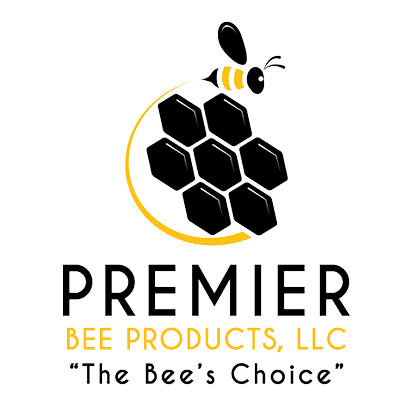6 Must-Dos to Prepare Your Hives for Spring
One of the keys to successful beekeeping is to plan ahead.
Winter is a challenging time for colonies, yet it requires less active management on the part of the beekeeper. As such, the season presents a perfect opportunity to chart your plans for a successful next year and beyond.
The goal of any beekeeper, no matter their reason for keeping bees, is to have strong colonies coming out of winter.
So, how can you achieve that in the months leading up to spring?
Let’s go through 6 must-dos to prepare your hives for the best chance to thrive come springtime.
1. Take time to learn.
Alright, alright. This is kind of a soft one. But its importance cannot be understated.
Beekeeping is a constant endeavor in learning. Indeed, the joy of beekeeping is in the journey, not the destination.
Because there are fewer responsibilities for the beekeeper during winter, this is a great opportunity to consume as much knowledge about the craft as you can. Come springtime, you will have plenty of chances to apply and relearn what you ingest.
Besides solely reading lots of material or watching videos on YouTube, it’s important to connect with other nearby beekeepers. Local knowledge is crucial as bees behave and succeed differently depending on the environment and climate.
Join a club or reach out to some mentors. Don’t know where to find any? The internet is a great place to start your search.
The wiser a beekeeper gets, the more they understand the necessity of learning about their bees.
“Indeed, the joy of beekeeping is in the journey, not the destination.”
2. Assess the hive’s internal environment.
The majority of problems for bees during winter can be summed up in three factors: temperature, moisture, and food.
Things get delicate for bees as soon as temperatures drop. The beekeeper needs to inspect the hive to ensure there is adequate ventilation and food stores. A build-up of moisture inside the hive spells death for bees. But open the hive for too long, and you risk introducing lots of cold air, which decreases the warmth of the cluster.
What’s a beekeeper to do?
Any inspection should be brief. Of course, the beekeeper must use their discernment as to when a hive must be tended to. If you pick up a hive and notice it is incredibly light on food, you have no choice but to crack it open and feed them. You may lose some bees to the cold, but you will lose all of them to starvation.
Find the balance between an optimal hive environment (low moisture and sufficient insulation) and protection from pests and starvation. It’s not easy, but there’s no alternative.
3. Treat for pests and diseases.
Speaking of pests and disease… they don’t go away in the wintertime.
Allowing them to take over during winter will create a weak or dead colony in the spring, so the hive must be monitored and treated.
Again, it’s important that any treatments be carried out quickly. But treating when necessary can be the difference between a robust colony and one too weak to take proper advantage of the spring nectar flow.
4. Feeeeeeed.
Here’s an obvious fact of the day: Bees don’t last long without food.
Now, you might not win any pats on the back for acknowledging such a fact, but you will do well to internalize it. Starvation is a key contributor to colony losses over winter, either from a lack of food stores or the inability of workers to forage.
Heading into winter, beekeepers must ensure their hives have adequate stores of honey. But a healthy colony may consume all of their food stores by late winter, in which case food supplements like pollen and sugar patties are due.
Do not stop feeding your bees until the honey flow begins.
5. Prepare and order equipment.
Before you begin ordering and building, take inventory of your current operation and review your plans for the upcoming year. Establish your growth plans for your apiary and determine how many boxes, frames, and other equipment you will require.
If you buy bees from others, do not delay in placing your order for bee packages or nucs. Many suppliers sell out early in the year.
And remember, if you do plan to buy bees, be sure to acquire them locally. The local stock will better adapt to your environment, as their genetics have micro-evolved to do so.
If you have unassembled components, winter is a great time to assemble these, install foundation, and paint boxes if needed.
6. Maintain a pollinator friendly habitat.
You are likely aware of the importance of selecting the right location for your apiary. But providing the necessary forage for your bees requires work to maintain.
You can’t just set it and forget it.
Plant flowers that will bloom at different times to make sure the bees have adequate pollen and nectar throughout the year. Also, consider reserving sections to support pollinators uniquely — i.e., allow wildflowers and flowering weeds to grow, resisting the temptation to mow.
Doing so will create a feast for your bees. The foragers will in turn thank you by providing the colony with ample food, leading to a growing and thriving colony.
To an outsider, it may appear that beekeepers take a months-long snooze while the bees cluster against the cold.
But any astute beekeeper knows that preparation is the name of the game when it comes to keeping strong, healthy bees.
It is not the job of the beekeeper to draw the comb, collect the nectar, and make the honey, but it is their duty and privilege to provide the right circumstances under which their bees can thrive.
The challenge is great, but the reward is even greater.
We hope these 6 must-dos serve as either a bit of new information or a refreshing reminder to you in your beekeeping journey.



